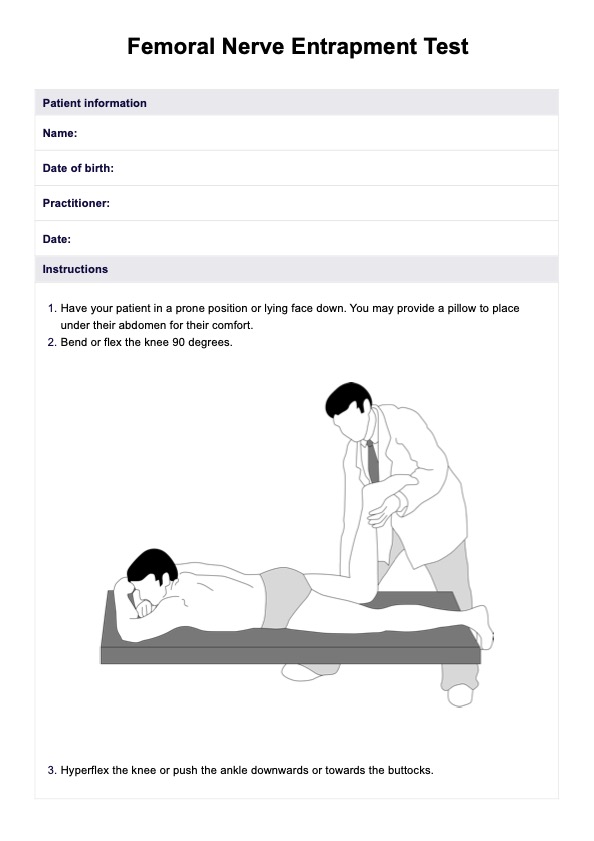The femoral nerve entrapment test, sometimes referred to as the femoral nerve tension test or prone knee bending test, is a diagnostic procedure used to evaluate potential irritation or dysfunction of the femoral nerve. During the test, the patient lies face down (prone), and the clinician flexes the knee to stretch the femoral nerve. A positive result occurs if the patient experiences pain or discomfort in the anterior thigh, which may indicate conditions like upper lumbar radiculopathy or high lumbar radiculopathy.

Femoral Nerve Entrapment Test
Assess your patient's femoral nerve with the Femoral Nerve Entrapment Test. Access a free template and a comprehensive guide to performing the test effectively.
Femoral Nerve Entrapment Test Template
Commonly asked questions
This test is commonly used to assess issues related to the lumbar plexus, such as nerve compression and injuries affecting the spinal cord or peripheral nerves. It is also helpful in differentiating femoral nerve dysfunction from conditions like sciatic nerve irritation, particularly in cases involving lower back or leg pain.
Hip extension and knee flexion are critical movements in the Femoral Nerve Entrapment Test because they create a stretch along the femoral nerve. These actions help pinpoint nerve tension or irritation, enabling clinicians to identify the source of symptoms and assess the involvement of structures like the hip flexors.
EHR and practice management software
Get started for free
*No credit card required
Free
$0/usd
Unlimited clients
Telehealth
1GB of storage
Client portal text
Automated billing and online payments











